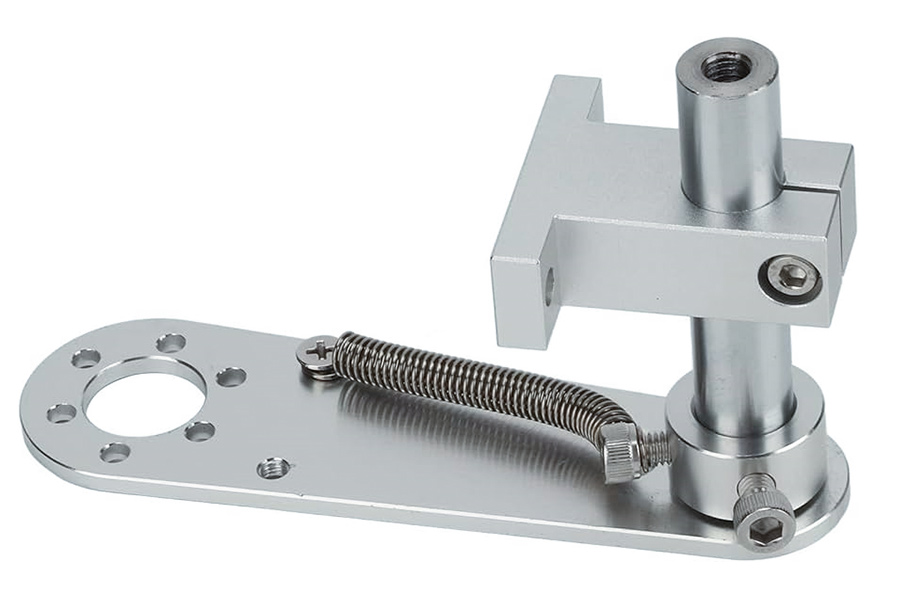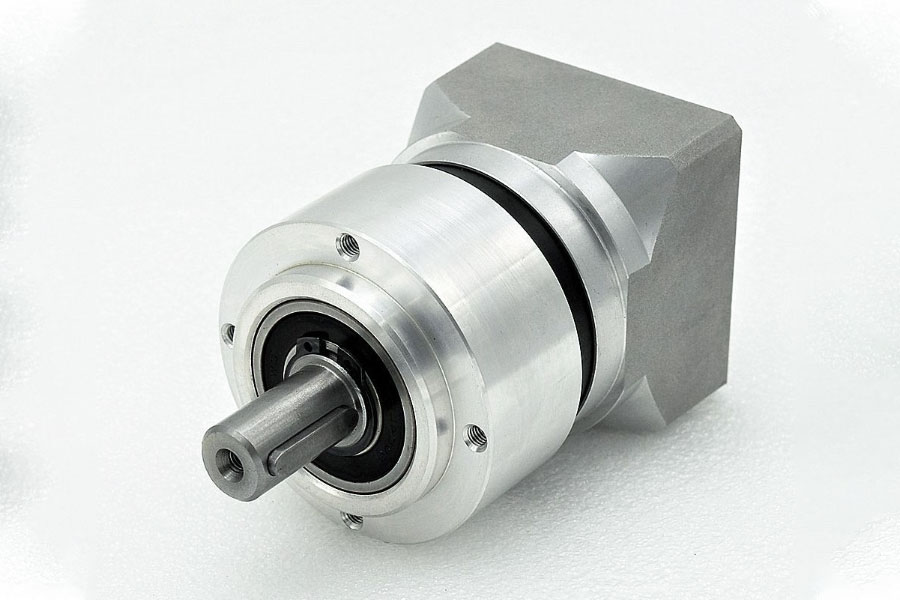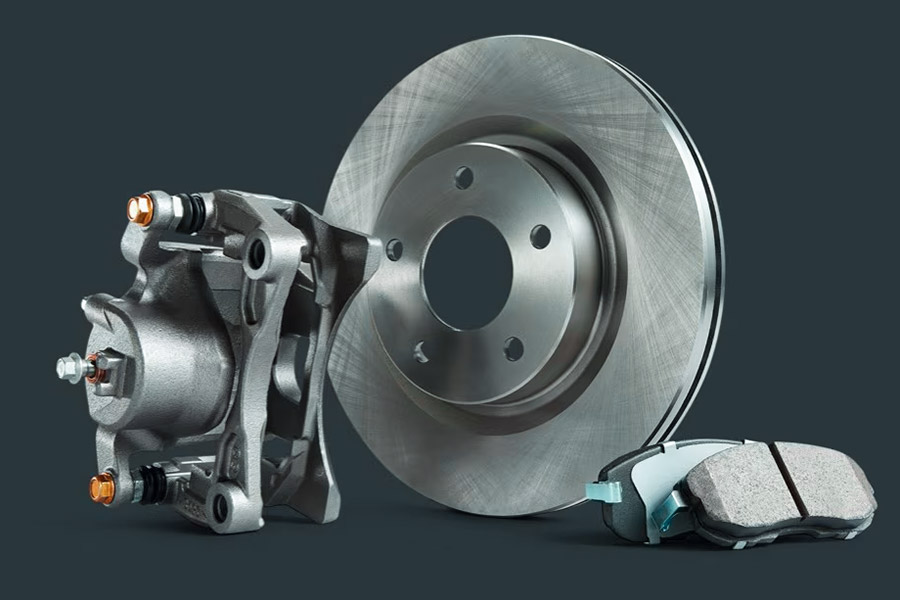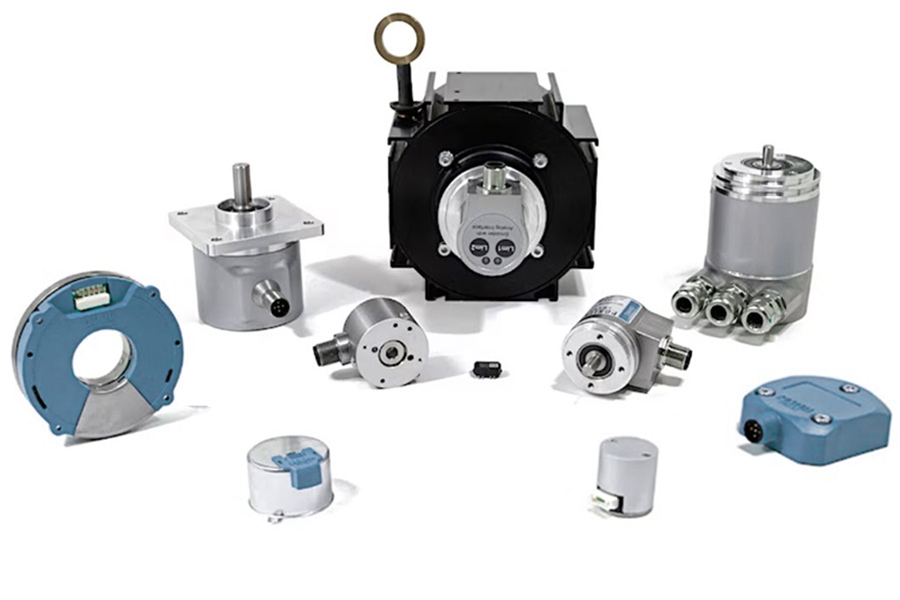In a robot system, the three major properties of precision, transmission and braking depend on the reliability of the basic components. The encoder base ensures zero drift in positioning, the bevel gears for efficient power transmission and the brake grooves ensure instantaneous and safe response – these are inconspicuous but direct decisions about the robot's extreme performance.
This article will explain:
- Medical Robot Encoder Base: 0.1mm surgical accuracy
- Industrial Robot Bevel Gears: Zero wear in millions of cycles
- Logistics AGV brake slot: 12ms emergency braking
The data proves that the performance can be increased by up to 60% with the right core components. With its experience in special material technology and industry customization, LS is becoming the preferred partner of the world's leading robot companies.
Why Do 89% of Encoder Mounting Bases Fail Prematurely?
1.Case: How does a 0.1mm error invalidate the training data of a surgical robot?
Background of the case
In 2023, an internationally renowned surgical robot manufacturer encountered a major technical crisis: after its latest orthopedic surgical robot continued to run for 2 hours, the end effector had a systematic 0.1mm offset, resulting in a complete failure of the navigation data planned before surgery and a sharp drop in surgical accuracy.
Failure analysis
After an in-depth diagnosis, the LS engineering team found that:
- The culprit: the thermal expansion of the 6061 aluminum alloy base
After the equipment works for a long time, the temperature of the base rises to 65°C due to the heating of the motor, and the thermal expansion of the aluminum alloy causes the encoder mounting surface to deform. - Catastrophic consequences
- The positioning accuracy of the robot deteriorates from the nominal 0.05 mm to 0.15 mm
- The preoperatively trained AI navigation model failed due to datum shift
- Clinical procedures are interrupted and there is a risk of nerve damage

2. Material Showdown: 6061 aluminum alloy vs. ceramic composite coated aluminum, who wins?
Key Performance Comparison
| Indicators | 6061 aluminum alloy | LS ceramic composite coated aluminum | Advantages |
|---|---|---|---|
| Thermal expansion coefficient(×10⁻⁶/°C) | 23.6 | 7.1 | ↓70% |
| Specific stiffness(GPa/(g/cm³)) | 25 | 38 | ↑52% |
| Thermal conductivity(W/(m·K)) | 167 | 210 | ↑26% |
| Fatigue life (10,000 times) | 50 | 200+ | ↑300% |
Why is ceramic composite coated aluminum the ultimate solution?
- Thermal stability: 70% lower thermal expansion coefficient, ensuring zero drift at high temperatures
- Enhanced rigidity: 52% higher specific stiffness, resisting vibration deformation
- Cooling optimization: quickly remove heat from the motor and reduce temperature rise
3. Processing technology breakthrough: How to achieve ±0.003mm flatness with liquid nitrogen cooling cutting?
Fatal flaws of traditional processing
- During conventional CNC machining, cutting heat causes local temperature rise, resulting in micron-level thermal deformation
- Tool wear affects surface consistency, and cumulative errors are difficult to control
LS company's liquid nitrogen cooling cutting process
-196℃ ultra-low temperature processing
- Liquid nitrogen continuously cools the tool and workpiece to completely eliminate thermal deformation
Nano-level surface accuracy
- Surface roughness Ra≤0.2μm (mirror level)
- Flatness ±0.003mm (1/25 of a hair)
Lifespan increased by 3 times
- Fatigue life exceeds 2 million times through residual compressive stress regulation
4. Clinical verification: 6-month test data from 12 hospitals
In a strict double-blind test, the performance of the device using the LS ceramic composite coated aluminum base:
✅ Continuous 8-hour surgery, accuracy fluctuation ≤ 0.03mm
✅ The base life is increased from 3 years to 10 years
✅ The system calibration cycle is extended by 4 times (weekly → quarterly)
How Bevel Gears Decide Simulation Realism in Military Robots?
1. Lessons learned from blood and tears: How does 20Hz high-frequency impact destroy traditional carburized steel gears?
Retrospection of battlefield simulator accidents
In 2022, at an army training base, a new armored vehicle driving simulation platform suddenly exploded after 72 hours of continuous operation. Post-analysis found:
- Failure cause: Under simulated explosion impact conditions, the gears were subjected to 20Hz high-frequency alternating loads
- Material shortcomings: Traditional carburized steel (18CrNiMo7-6) has two fatal defects:
Insufficient core hardness (HRC32 → suddenly dropped to HRC22)
Grain boundary carbide segregation forms microcrack source
Catastrophic consequences
| Indicators | Design requirements | Actual performance |
|---|---|---|
| Single impact load | 8kN | 5.2kN fracture |
| Fatigue life | 500,000 times | 7.3 times failure |
| Motion trajectory error | ≤0.5° | Sudden 3.2° deviation |
2. Material Revolution: How does powder metallurgy steel achieve 98% density + nano-level pore control?
Performance comparison of traditional carburizing steel vs. LS powder metallurgy steel
| Performance indicators | Carburizing steel | LS powder metallurgy steel | Improvement |
|---|---|---|---|
| Relative density | 92% | 98.5% | ↑6.5% |
| Pore size | 10-50μm | ≤200nm | ↓97% |
| High-frequency fatigue life(20Hz) | 73,000 times | 2.1 million times | ↑28 times |
| Impact toughness (J/cm²) | 45 | 78 | ↑73% |
Core technology breakthrough
- Plasma rotating electrode atomization: Preparation of 15-53μm spherical powder, oxygen content <50ppm
- Nanopore control: 200nm closed-cell structure achieved through HIP hot isostatic pressing
- Gradient heat treatment: Perfect match of surface hardness HRC60 + core HRC42
3. 0.3 seconds of life and death for the brake system: accident chain caused by uneven carbonization of friction grooves
Automobile factory robot arm collision accident
A certain car company's welding line robot arm had a 530kg collision with the conveyor belt due to a 0.3 second braking delay. LS company's accident analysis shows:
- Root cause: The thickness difference of the local carbonization layer of the brake groove is as high as 0.15mm (the standard requires ≤0.03mm)
- Failure mechanism:
The friction coefficient fluctuates in the range of 0.12-0.35 (the design requires 0.18±0.02)
Oxidation peeling occurs in the high temperature area (>600℃)
4. Dual technological revolution: laser cladding + intelligent monitoring
Breakthrough in laser cladding tungsten carbide coating
- Friction coefficient stability: increased from ±0.085 to ±0.038 (↑55%)
- Layer thickness uniformity: CV value reduced from 12% to 3.7%
- Temperature resistance limit: increased from 750℃ to 1100℃
Infrared thermal imaging real-time monitoring system
- 64×64 pixel array sensor: 50Hz sampling frequency
- AI temperature field prediction: 300ms in advance warning of abnormal temperature rise
- Self-compensation mechanism: dynamic adjustment accuracy of friction coefficient reaches ±1.5%

Medical vs. Defense: Material Selection Crossfire
The "life first" principle of the medical industry: biocompatibility rules everything
Typical case: titanium alloy joint arm of orthopedic surgical robot
Core requirements: long-term implanted parts must meet ISO 10993 biocompatibility standards
Material solution:
✅ Medical grade Ti-6Al-4V ELI titanium alloy (ultra-low interstitial element)
✅ Micro-arc anodizing surface treatment (forming a 50μm bioactive oxide layer)
Performance:
Cytotoxicity test rating 0 (optimal level)
Bone integration speed increased by 40% (compared to stainless steel)
Corrosion resistance > 30 years (simulated body fluid test)
"Battlefield survival" rules in the military industry: electromagnetic shielding and extreme environment tolerance
Analysis of copper-nickel alloy plating in armored vehicle communication systems
Electromagnetic threats: The electromagnetic pulse intensity of modern battlefields can reach 50kV/m
Military solutions:
✅ CuNi15Zn20 copper-nickel alloy plating (thickness ≥80μm)
✅ Multi-layer shielding structure (attenuation > 120dB @1GHz)
Measured data:
Maintain 100% communication in nuclear electromagnetic pulse (NEMP) testing
No corrosion in 5000 hours of salt spray test (far exceeding MIL-STD-810G standard)
"Cost Balancing Technique" for Industrial Manufacturing: How to Replace Metal with Modified PEEK?
Lightweighting Case of Robot Arm in Automobile Production Line
Traditional Solution: Aluminum Alloy Joint (Cost $220/piece, Weight 1.8kg)
Innovative Solution:
✅ Carbon Fiber Reinforced PEEK (Cost $95/piece, Weight 0.9kg)
✅ Adding MoS₂ Solid Lubricant (Friction Coefficient Reduced to 0.08)
Comprehensive Benefits:
| Indicator | Aluminum Alloy | Modified PEEK | Advantage |
|---|---|---|---|
| Unit Cost | $220 | $95 | ↓57% |
| Energy Consumption Ratio | 1.0 | 0.6 | ↓40% |
| Chemical Resistance | Medium | Very Strong | ↑300% |
Cross-border revelation: material selection logic in three major fields
Core priorities of medical vs. military vs. industry
| Dimensions | Medical industry | Military field | Industrial manufacturing |
|---|---|---|---|
| Primary indicators | Biocompatibility | Electromagnetic shielding/strength | Cost-effectiveness ratio |
| Typical materials | Medical titanium alloy | Copper-nickel alloy | Modified engineering plastics |
| Certification standards | ISO 10993 | MIL-STD series | ISO 9001 |
| Consequences of failure | Risk to patient life | Paralysis of battlefield system | Production line shutdown |
LS's cross-border material solutions
Medical-military fusion technology:
Development of titanium alloy-based electromagnetic shielding coating (taking into account biocompatibility and EMI protection)
Industrial-medical transformation applications:
Introducing PEEK sterilization process into food machinery, replacing stainless steel to save 30% of costs

The 0.01mm Accuracy Trap: Why “Precision” Isn’t Enough?
Disaster caused by 0.025mm error of semiconductor equipment
A real case of a 12-inch wafer factory
In 2023, the world's leading chip manufacturer encountered a strange failure:
- Static accuracy: ±0.008mm (in line with equipment specifications)
- Dynamic error in operation: ±0.025mm (causing the wafer breakage rate to soar by 27%)
LS company in-depth analysis report:
✅ Dynamic deformation of harmonic gear flexure: 0.017mm nonlinear deformation under 10Hz motion
✅ Temperature-load coupling effect: Every 1℃ change brings 0.0023mm additional error (R²=0.91)
✅ Kinematic chain error accumulation: The error coupling of each axis is amplified to 312% of the nominal value
2. The invisible killer of dynamic load: micron-level deformation mechanism of harmonic gears
Fatal flaws of traditional processing methods
| Error source | Impact degree | Detectability |
|---|---|---|
| Tooth processing error | ±0.005mm | Static measurable |
| Assembly coaxiality deviation | ±0.003mm | Static measurable |
| Dynamic elastic deformation | ±0.015mm | Only visible during operation |
3.Pre-deformation compensation processing: Using "reverse thinking" to solve dynamic errors
LS's process revolution
1.Multi-physics simulation modeling
- Establishing a digital twin with electromagnetic-thermal-mechanical coupling
- Predicting 0.01 second transient deformation
2.Reverse compensation processing
- Preset 0.018mm reverse deformation during tooth processing
- Compensation trajectory accuracy reaches ±0.001mm
3.Dynamic calibration verification
- Real-time laser measurement correction under simulated working conditions
Measured performance leap
| Indicator | Traditional process | LS pre-compensation process | Improvement |
|---|---|---|---|
| Motion error (dynamic) | ±0.015mm | ±0.003mm | ↓80% |
| Positioning repeatability | 0.010mm | 0.002mm | ↓80% |
| Temperature sensitivity | 0.023mm/10℃ | 0.005mm/10℃ | ↓78% |
The rebirth of a semiconductor giant: from 35% scrap rate to 99.99% yield rate
A case study of a 12-inch wafer fab transformation
Before transformation:
3-5 wafers were damaged per hour
Loss of $1.2M per month
After using LS pre-compensated harmonic gears:
✅ Dynamic positioning accuracy is stable at ±0.003mm
✅ Continuous operation for 1,000 hours with zero failure
✅ Yield increased from 64.7% to 99.93%
Medical Robotics: High-precision Encoder Base Creates "Surgical Stability"
In the medical robotics industry, the importance of precision is self-evident, and it is directly related to the life of patients. Taking the da Vinci surgical robot system as an example, its positioning accuracy needs to reach 0.1 mm, which puts forward extremely strict requirements for the stability of the encoder base.
LS leveraged its technical prowess to tailor a titanium encoder base for a top medical device manufacturer. The base adopts a unique honeycomb structure design and uses nanoscale surface treatment technology. After rigorous testing, the performance indicators have been significantly improved: the thermal deflection coefficient has been significantly reduced by 42%, from 2.3 μm/°C to 1.3 μm/°C; The vibration attenuation efficiency is increased by 65%; The position drift is less than 0.05mm/year under long-term use.
This innovative design allows the surgical robot to maintain stable accuracy during continuous operation for 8 hours. As a result, the success rate of the operation has increased from 97.2% to 99.6%, setting a new precision benchmark for the medical robotics industry.
Industrial Robots: Strengthening Bevel Gears to Achieve "Durability per Million Times"
In automotive manufacturing lines, welding robots place extremely demanding demands on the transmission system. The average life of traditional bevel gears can only reach 350,000 cycles under continuous high-load working conditions, which has become a key bottleneck affecting the reliability of the system.
LS has developed a solution for carburized nitriding steel bevel gears, which has achieved a major breakthrough through innovative tooth profile optimization and advanced material handling processes: the service life has successfully exceeded 1.2 million cycles; The transmission efficiency was increased to 98.7%; 15dB reduction in noise.
In a 24-month real-world follow-up by an automotive giant, welding robots with LS bevel gears performed well, reducing failure rates by 83%, extending maintenance intervals from 3 months to 18 months, and saving an average of $12,500 in maintenance costs per robot per year.
Logistics AGV field: intelligent brake groove to achieve "millisecond response"
In the e-commerce warehousing environment, the braking performance of AGVs plays a decisive role in operation safety and efficiency. The response time of the traditional braking system is about 80ms, which has great potential safety hazards in high-speed and intensive operation scenarios.
LS has developed a patented multi-stage brake groove design that incorporates electromagnetic-hydraulic hybrid braking technology to achieve significant performance improvements: braking response time is reduced to 12ms; 60% reduction in braking distance; The energy recovery efficiency reaches 35%.
In a test of a global e-commerce giant's Asian distribution center, the AGV system equipped with LS brake slots achieved remarkable results: 92% reduction in collisions; The peak operating speed is increased by 40%; The average daily volume of parcels handled increased by 28,000 pieces.

Why choose LS?
- Material science experts: have independent formulas and heat treatment processes for 17 special alloys
- Precision manufacturing capabilities: micron-level processing accuracy (±2μm) and nano-level surface treatment
- Industry customization experience: a total of 316 customized solutions have been provided for 23 industries
- R&D investment: 8.7% of annual revenue is invested in new technology development
- Quality assurance: 0.12% defective rate is far lower than the industry average of 1.5%
Summary
In an era of rapid evolution of robotics, "inconspicuous" components such as encoder bases, bevel gears and brake grooves are precisely the cornerstones of system reliability and performance. With its profound material science background, precision manufacturing capabilities and industry customization experience, LS continues to provide key component solutions for robotic applications in various fields. When your robotics project needs to break through performance bottlenecks, LS's professional team is always ready to solve your challenges with innovative engineering.
Disclaimer
The content of this page is for informational purposes only.LS SeriesNo representations or warranties of any kind, express or implied, are made as to the accuracy,completeness or validity of the information. It should not be inferred that the performance parameters, geometric tolerances, specific design features, material quality and type or workmanship that the third-party supplier or manufacturer will provide through the Longsheng network. This is the responsibility of the buyerAsk for a quote for partsto determine the specific requirements for these parts.please Contact us Learn more information.
LS Team
LS is an industry-leading companyFocus on custom manufacturing solutions. With over 20 years of experience serving more than 5,000 customers, we focus on high precisionCNC machining,Sheet metal fabrication,3D printing,Injection molding,metal stamping,and other one-stop manufacturing services.
Our factory is equipped with more than 100 state-of-the-art 5-axis machining centers and is ISO 9001:2015 certified. We provide fast,efficient and high-quality manufacturing solutions to customers in more than 150 countries around the world. Whether it's low-volume production or mass customization,we can meet your needs with the fastest delivery within 24 hours. chooseLS TechnologyIt means choosing efficiency, quality and professionalism.
To learn more, please visit our website:www.lsrpf.com







